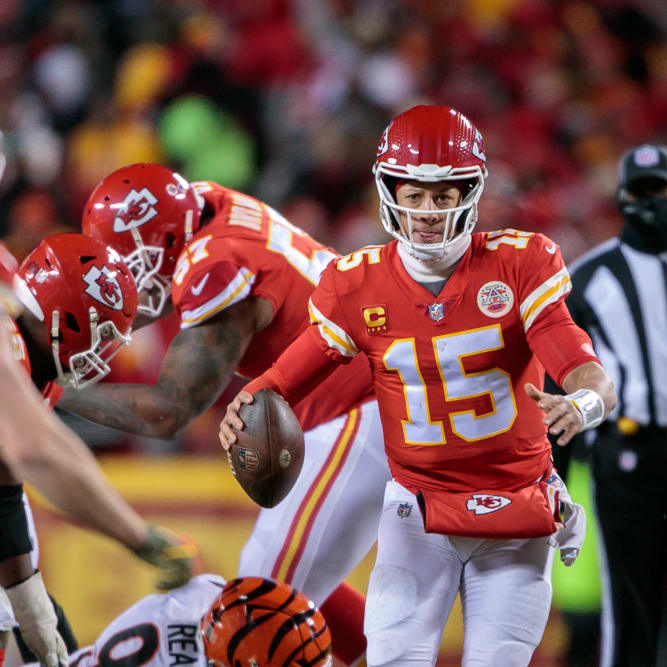This article is part of our NFL Offseason Watch series.
If running backs have been devalued in the NFL, you certainly wouldn't know it by observing the current offseason, as few positions offered similar depth in the free-agent market, yet we've still seen some third and fourth-tier talents land surprisingly large contracts.
Of course, with the exception of DeMarco Murray and Lamar Miller, the key offseason additions all figure to face serious competition for touches, even if they signed for starter's money. Here are the key moves, as of Wednesday, Mar. 23:
Free Agent Acquisitions/Re-Signings
DeMarco Murray, Tennessee Titans (traded from Philadelphia)
Murray, of course, wasn't actually a free agent, instead getting traded from Philadelphia to Tennessee fewer than 12 months after signing a massive contract with the Eagles. This is one of those situations in which any change was bound to be a good one, as Murray didn't fit in Chip Kelly's offense and clearly didn't make a good impression with the Philadelphia organization. Granted, he probably would've been a better fit in Pederson's scheme, but it still made sense for the two parties to separate.
Murray found a pretty great home for fantasy purposes, as there isn't much standing between him and a massive three-down workload in Tennessee. What's more, the Titans have already said Marcus Mariota will mostly work under center in 2016, oddly playing to the strengths of a 28-year-old running back instead of a 22-year-old quarterback. This probably seems dumb because it is, but Murray could still re-emerge as an RB1 on the strength of workload alone.
Chris Ivory, Jacksonville Jaguars (five-year, $35 million contract)
This contract isn't nearly as egregious as it seems at first glance, with Ivory reportedly getting just $10 million in guaranteed money on what can really be thought of as a two-year deal. Still, the Jags made a major commitment to an early-down power back, despite selecting 220-pound T.J. Yeldon with the 36th overall pick in the 2015 NFL Draft.
Jacksonville brass has already said that it envisions a split backfield, with Ivory presumably getting most of the carries and Yeldon likely to handle passing downs. The team clearly hopes to avoid another season of constantly playing from behind, but even with some nice additions made on defense, the Jaguars don't project as any better than an eight-win team. Given that Yeldon will also handle some of the early-down work, this appears to be a worst-case scenario for fantasy football, with both running backs likely to enter 2016 as low-end RB2s.
Lamar Miller, Houston Texans (four-year, $26 million contract)
Despite playing all 48 games (and starting 47) the past three seasons, Miller has yet to top 254 touches in a single campaign, thanks to a Miami coaching staff that often underused him. That shouldn't be a problem in Houston, where Bill O'Brien didn't hesitate to give Arian Foster (Achilles) massive workloads when he was actually healthy. With Foster in search of a new home, Miller may be backed up by the unimpressive duo of Alfred Blue and Jonathan Grimes.
Although he'll surely come off the board earlier than in past seasons, Miller still seems likely to be a bit undervalued in 2016 drafts.
Matt Forte/Bilal Powell/Khiry Robinson, New York Jets
I absolutely loved the Matt Forte addition…or at least I did until the Jets also signed Powell, a passing-down specialist, to a three-year, $11.25 million contract. Forte, as you probably know, is one of the best receiving backs in NFL history – and that's probably where he'll provide the vast majority of his real-life value at this stage in his career.
In any case, the Jets did also add a running back with more potential as a pure runner, signing the 220-pound Robinson (broken tibia) to a modest 1-year, $1.2 million contract. Even with Robinson coming off a nasty injury, we'll need to keep a close eye on this backfield during training camp before reaching any conclusions about Forte's value.
Alfred Morris, Dallas Cowboys (two-year, $3.5 million contract)
Morris will likely compete against incumbent starter Darren McFadden for the right to lead a backfield that's supported by a dominant offense line. It's obviously an attractive gig for fantasy purposes, but Morris only has a two-down skillset and wasn't even effective as a runner last season (3.7 YPC).
This could end up as a three-headed backfield, with Lance Dunbar (knee) getting most of the catches while Morris and DMC split carries.
James Starks, Green Bay Packers (two-year, $6 million contract)
In typical Packers fashion, we'll likely get at least one more year of the Eddie Lacy-Starks backfield, which is boring but not necessarily bad. Lacy's ability to lose weight is the key factor, as Starks could be limited to 5-10 touches per game if his teammate shows up to training camp in good shape.
I do kind of feel bad for Lacy, who is in the unusual position of knowing that his gut (or lack thereof) will be a national story on the first day of training camp. Between that and the fact he's entering a contract year, Lacy shouldn't lack for motivation.
Still Out There
Arian Foster, Free Agent
Still recovering from a torn Achilles suffered Oct. 25, Foster plans to continue his NFL career but will need to find a new home. Assuming his rehab goes well, he should be able to find a team that will let him compete for a starting job, or at the very least a gig as a third-down back.
Foster only ran for 163 yards on 61 carries (2.7 YPC) in four games last season, but he did post a 22-227-2 receiving line. The Seahawks seem like a perfect fit.
LeGarrette Blount, Free Agent
Blount said he wants to stay in New England, and while a reunion would seem to make sense for both parties, it's possible the Patriots would rather fill their power-back role with a draft pick. Even if that's the case, Blount could still return for another season, as he probably won't have other offers for much more than the veteran's minimum. It's hard to imagine Blount retaining any fantasy value without his cozy role in New England.












